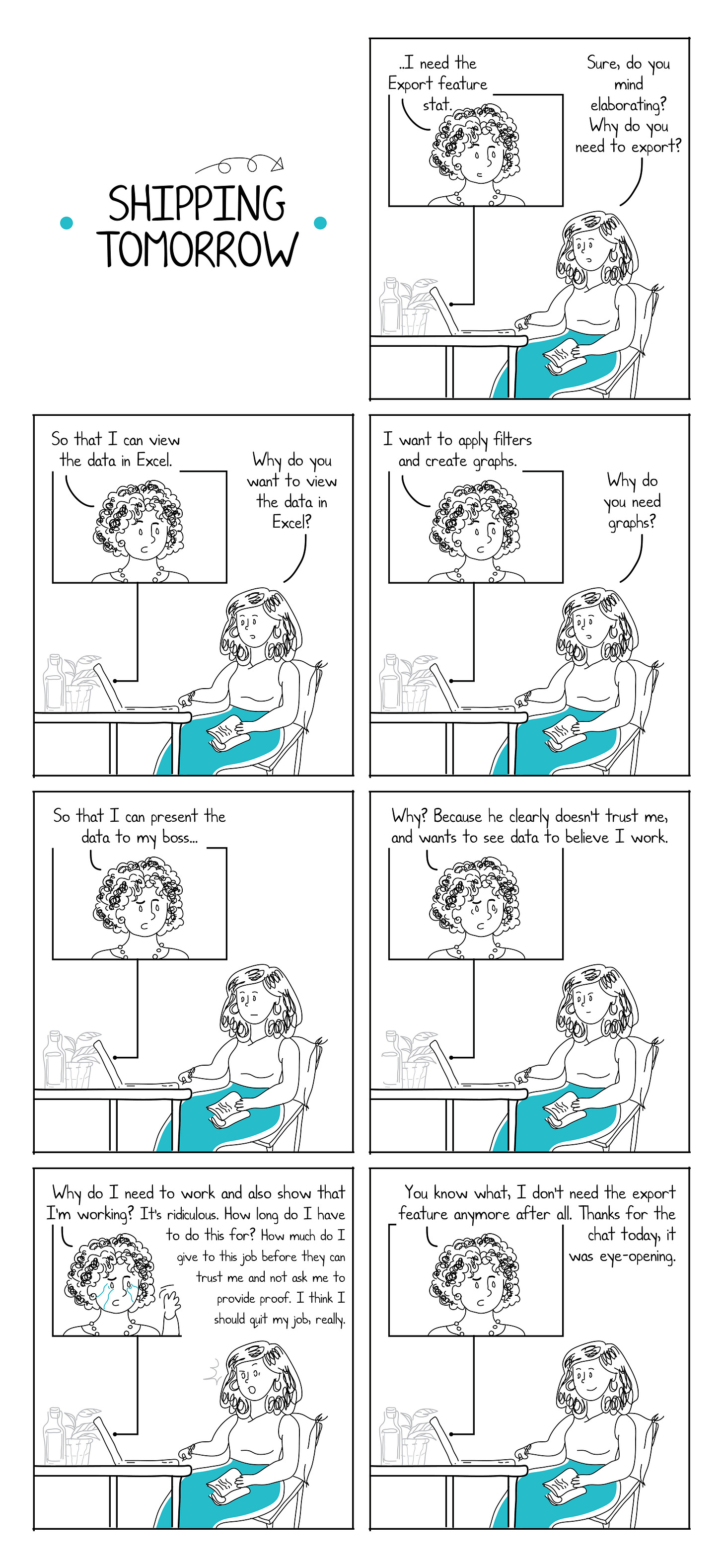How can the Five Whys technique make you a better product manager?
The Five Whys technique is an interrogative technique that is used to figure out the root cause of a problem. It was originally developed by Sakichi Toyoda and used by Toyota Motor Corp to understand why new product features or manufacturing techniques were required. The idea is to keep asking “Why?” until you figure out what the real problem is so that you know exactly what to solve.
In the Toyota context, it looked something like this:
An example of a problem is: The vehicle will not start.
Why? – The battery is dead.
Why? – The alternator is not functioning.
Why? – The alternator belt has broken.
Why? – The alternator belt was well beyond its useful service life and not replaced.
Why? – The vehicle was not maintained according to the recommended service schedule.
In the product management context it can look like this:
A customer is asking for the option to add tags to different records.
Why tags?
They can use the tags to organize their dataWhy organize?
They can find a particular piece of information at a later dateWhy do they need to find it?
The customer needs to refer to historical data to solve current problemsWhy does the customer need historical data?
It prevents them from having to start from scratchWhy do they not want to start from scratch?
To save time
Now that you have this information—that the customer actually wants to save time—you will understand that simply building a tags feature isn’t enough. To really save time, the customer needs to be able to easily search or filter using this tag as well.
In some cases, you might even find out that you don’t need to build the feature at all! Here’s the latest from our Instagram comic channel.
Different scenarios where the five whys can be used
As broad as the PM role is, you will find plenty of situations in your daily life where you can apply this framework.
Figuring out why a feature needs to be built: A good Product Requirements Document starts with the problem to be solved. And as shown by the example above, the problem is best understood by digging deeper into the real customer problem.
Creating your roadmap: While deciding what to build for the next quarter, or prioritizing from the list of features marked for this quarter, it is easy to get overwhelmed. Asking the whys about every big feature helps you tie to a particular metric or goal, and gives you clarity about what’s most impactful
Debugging an issue raised by your customers: A good PM always has one foot in the debugging process and doesn’t leave everything to the developers. And the Five Whys technique is a great way to get to the root cause of a bug.
Digging deeper to find out why an important metric has been falling: During your time as a PM, you’ll invariably have to deal with problems like falling signups or rising churn. This is another place to apply the Five Whys and get to the bottom of the issue.
The five whys method can help when you feel stuck
The product management role has a lot of scope for creativity and innovative problem-solving. We all go into the job with a sense of excitement, but we eventually hit that point where it fizzles out.
Over time, it can start to feel like we’re only building a feature because “the CEO wants it” or “the competitors have it”. And that can be a demotivating place to work from.
The Five Whys can help you renew your sense of clarity during these tough times. If you feel like you’re building a feature just because the CEO wants it, start asking yourself the whys.
Let’s say your CEO is asking you to build a fancy ML feature, but you don’t think it’s an immediate pressing need for your customer.
Why does the CEO want this feature?
Because she says that machine learning is the future of automation.Why is ML the future of automation?
Because it provides the ability to perform simple flows without human interaction while providing a good user experience.Why do we need to perform simple flows without human interaction?
Because it will speed things up and help the company scale exponentially in the coming years.Why does the company need to scale?
Because scaling is the path to becoming profitable.
Now, you’re no longer building the feature because your CEO wants it. You’re building it because you need to make your company profitable! With this newfound perspective, you will be a lot more motivated to work on this exciting new feature.
A great thing about this technique is that it becomes muscle memory once you’ve applied it a number of times. Eventually, your mind will automatically ask the whys on autopilot and you’ll find it easier and easier to find clarity during every challenge.

